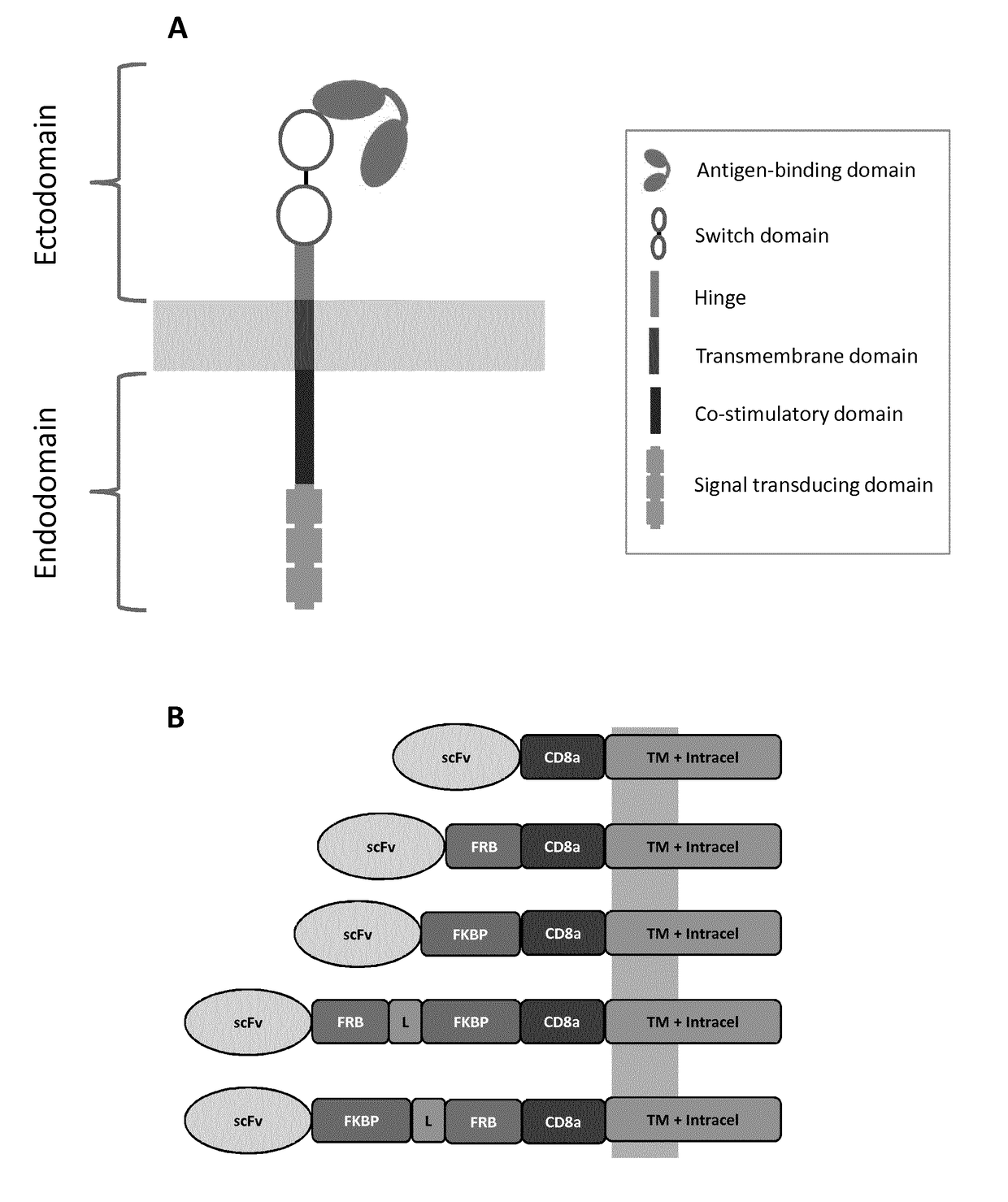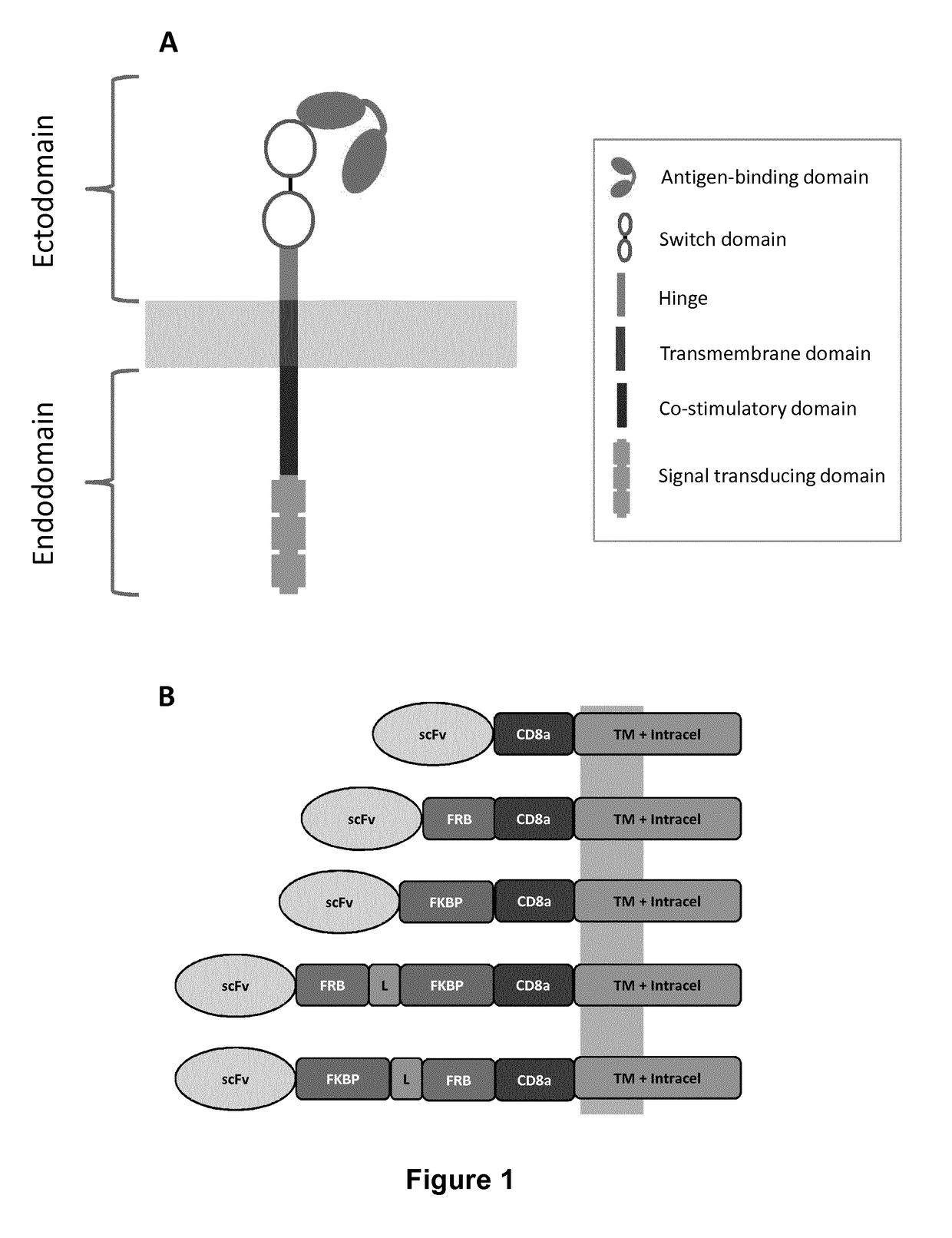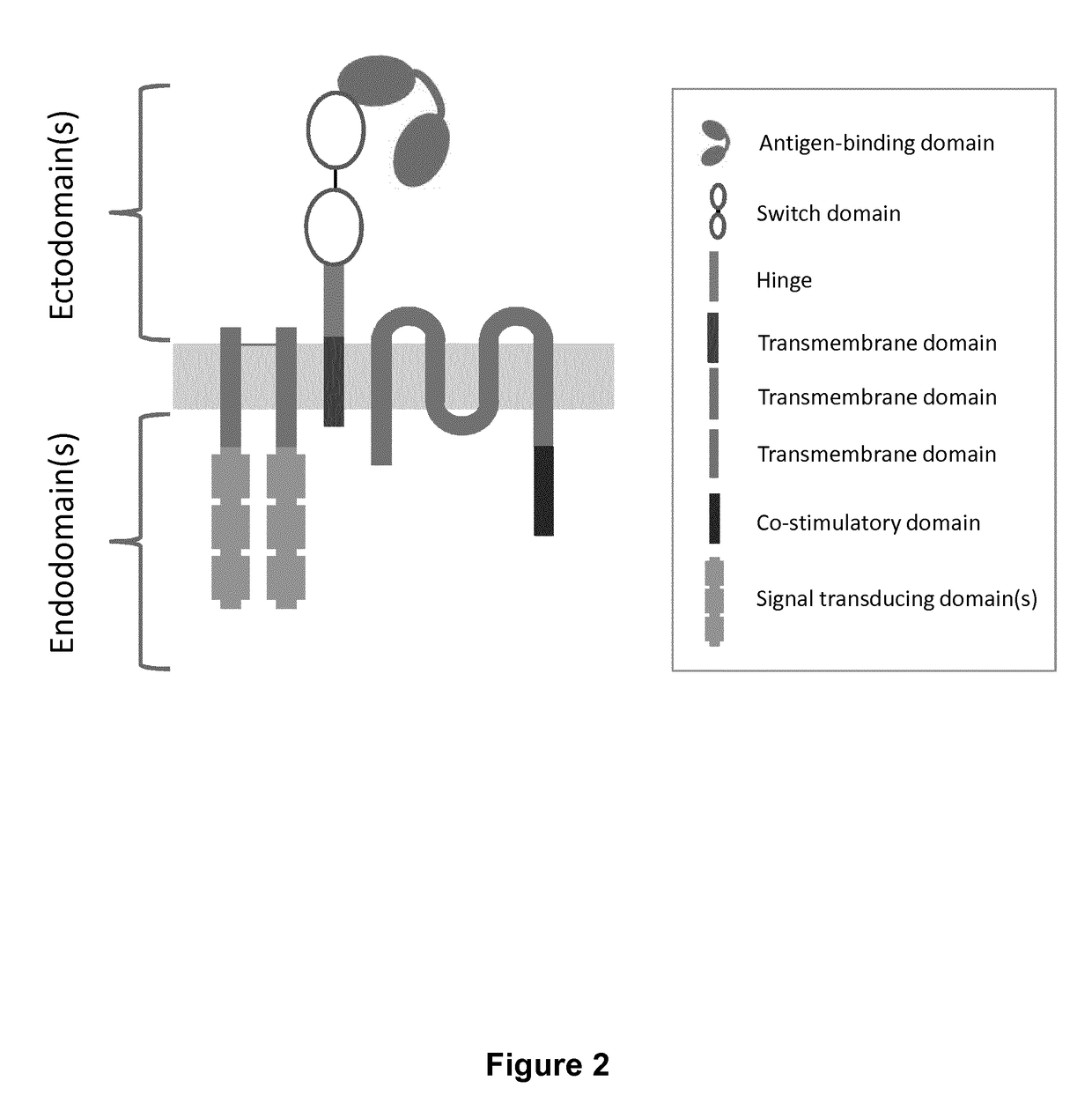Chimeric antigen receptors with integrated controllable functions
a chimeric antigen receptor and integrated control technology, applied in the field of cell immunotherapy, can solve the problems of inability to provide prolonged expansion and anti-tumor activity in vivo, raised risks associated with cytokine-release syndrome (crs), and “on-target off-, premature end of treatmen
- Summary
- Abstract
- Description
- Claims
- Application Information
AI Technical Summary
Benefits of technology
Problems solved by technology
Method used
Image
Examples
example 1
nt of a Small Molecule (Rapamycin) Switch-on mcCAR19 and mcCAR123—mRNA Delivery—Surface Detection
[0360]Constructs and mRNA Preparation
[0361]All constructs originated from the pCLS24707 (SEQ ID NO: 38) which encode the α-chain (SEQ ID NO: 39), β-chain (SEQ ID NO: 40) and γ-chain (SEQ ID NO: 41) of the multichain CAR (mcCAR). The sequences coding for the FRB domain (SEQ ID NO: 2) and FKBP domain (SEQ ID NO: 1) were synthetized de novo (GeneCust). The scFV, hinge-transmembrane-intracytoplasmic alpha chain domain, the FRB and the FKBP were further amplified by PCR to generate golden gate assembly compatible fragments (SEQ ID NO: 42 to 45). In addition an FRB-FKBP and an FKBP-FRB fragment were generated (SEQ ID NO: 46 to 47) using a four-EAAAR-linker (SEQ ID NO: 19) or a −GS-4x-EAAAR-linker (SEQ ID NO: 20) and standard molecular biology procedures. Fragments were then assembled using round of restriction and ligation leading to pCLS26563, pCLS26564, pCLS26881, and pCLS27123 (SEQ ID NO: 4...
example 2
nt of a Small Molecule (AP21967) Switch-on mcCARCD19—mRNA Delivery—Surface Detection
[0368]Constructs, mRNA Preparation and Flow Cytometry
[0369]To design an integrated system to switch the scFv / antigen interaction between on / off states, either the FRB, the FKBP12, or fusion of the FRB and FKBP12 were inserted between the CD8a hinge and the scFv domains (FIG. 1B). As a starting experiment, primary T cell with mRNAs encoding each chain of the multichain CAR (mcCAR) were transfected. Upon addition of rapamycin, changes in the detection of the extracellular hinge domain were monitored by tracking the Fab′2 domain of CD19-targeting scFv (100 nM, 20 h). In the absence of the small molecule (rapamycin), it was found that a high level of surface detection could only be achieved for the wild type mcCAR and the FKBP-mcCAR with above 90% of positive cells with an overall high MFI as shown in FIG. 3A. The presence of both FKBP and FRB in the stalk region virtually abolished surface detection of ...
example 3
nt of a Small Molecule (AP21967) Switch-on mcCAR—mRNA Delivery—Induced Cytotoxicity
[0375]The cytolytic activity of engineered T-cells endowed with the FKBP-FRB* mcCAR CD19 from example 2, was assessed using a flow cytometry-based cytotoxicity assay. In this assay target cells presenting the CAR target antigen (Daudi CD19 positive) are labelled with CellTrace™ CFSE or and control cells with CellTrace™ violet. The mixed target cell populations (1:1 ratio) was co-incubate at 37° C. with various ratio of engineered effector CAR T cells (Effector / Target ratio of 20:1) in a final volume of X-Vivo-15 media 100 uL, for a fixed time periods (5 h) in presence of vehicle (Ethanol) or AP21967 (100 nM).
[0376]The whole cell population was recovered, washed in PBS and labeled with eFluor780 viability marker before being fixed by 2% PFA. Fixed cells were analyzed by flow cytometry to determine their viability. Flow cytometry and data analysis were performed as described in example 1.
[0377]The data ...
PUM
| Property | Measurement | Unit |
|---|---|---|
| Fraction | aaaaa | aaaaa |
| Cytotoxicity | aaaaa | aaaaa |
| Affinity | aaaaa | aaaaa |
Abstract
Description
Claims
Application Information
 Login to View More
Login to View More - R&D
- Intellectual Property
- Life Sciences
- Materials
- Tech Scout
- Unparalleled Data Quality
- Higher Quality Content
- 60% Fewer Hallucinations
Browse by: Latest US Patents, China's latest patents, Technical Efficacy Thesaurus, Application Domain, Technology Topic, Popular Technical Reports.
© 2025 PatSnap. All rights reserved.Legal|Privacy policy|Modern Slavery Act Transparency Statement|Sitemap|About US| Contact US: help@patsnap.com



